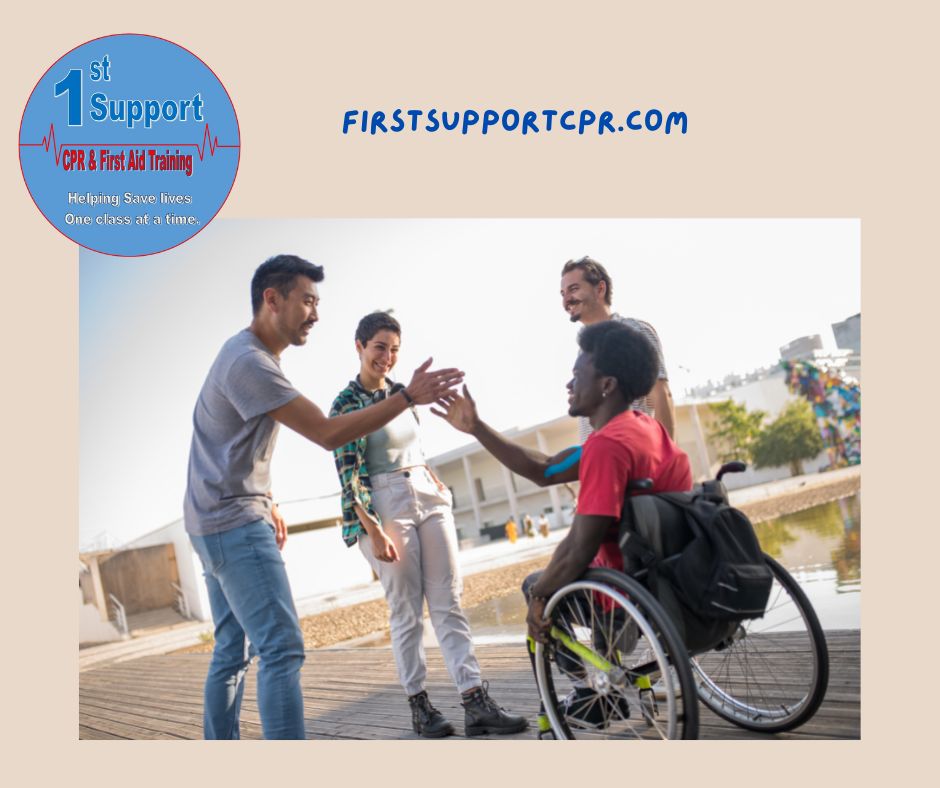
Learning high-quality CPR can be difficult for those people with disabilities even to a non-disabled people. Doing compressions at a rate of 100-120 BPM, having the strength to push down 2 inches in an adult victim, the endurance to provide CPR for minutes on end, and the ability to kneel for a long period of time. These are all challenges to overcome when learning CPR and it’s the job of the instructor to help students find the strength to overcome these challenges.
But what happens when your student is disabled? What if they are pregnant? Or deaf? Or missing a limb? Or do they simply have bad knees? How do you teach a student CPR who may not believe it is possible themselves? Thankfully, all it takes to save a life using CPR is a willingness to learn and an instructor who is willing to help students adapt to challenges they may face.
Training centers adapt to teach the disabled
Currently, CPR certification is given to students who can properly perform high-quality CPR and accurately use an AED. This means chest compressions of 100 – 120 BPM, a compression depth of 2 inches on adults and a 1/3 of the chest diameter in children, a chest compression fraction of greater than 80%, and no excessive ventilations, according to the American Heart Association. You also must understand how to properly use an AED to shock and revive a victim.
Unfortunately, some people with disabilities may not be able to properly learn and/or perform CPR in the intended way to earn that certification. However, that doesn’t mean there is no hope. Instructors can – and should – adapt their teaching methods to fit the needs of all of their students.
“There is nothing that you cannot modify to make [CPR training] capable for someone to be empowered to do this,” said Tammy Turner, the National Training Center Coordinator, an American Heart Association Training Center, since 2014 and an instructor since 1996.
“You have to have a different way to teach someone who is deaf…someone who is blind are not going to see the visual aspect, but you can paint pictures in their mind. They’re very capable. Also, have CPR training be something they can physically feel.”
Even if someone can’t physically perform the requirements, they can still understand the concepts of CPR. Leadership during an emergency is just as important as those doing the ‘heavy lifting.’ The American Heart Association understands and will grant an Advisor: BLS CPR card to those who perform verbal recognition of the required knowledge and skills for CPR.
Students with disabilities may have some limitations, but many can overcome these potential limitations with technology and creative thinking.
When it comes to technology, accessibility is becoming more important than ever. Large companies like Google, Yahoo, Apple, and others are leading the way to make technology more accessible for those with disabilities, such as smartphone screen magnification or eye tracking for those who are paralyzed
First Support CPR offers CPR classes every Tuesday at 7:15 PM. We offer BLS, First Aid, CPR AED, First Aid CPR AED and Pediatric First Aid CPR AED. We also offer an offsite training. If you have any questions, you can email us at info@firstsupportcpr.com or call at (408) 475-7724.
